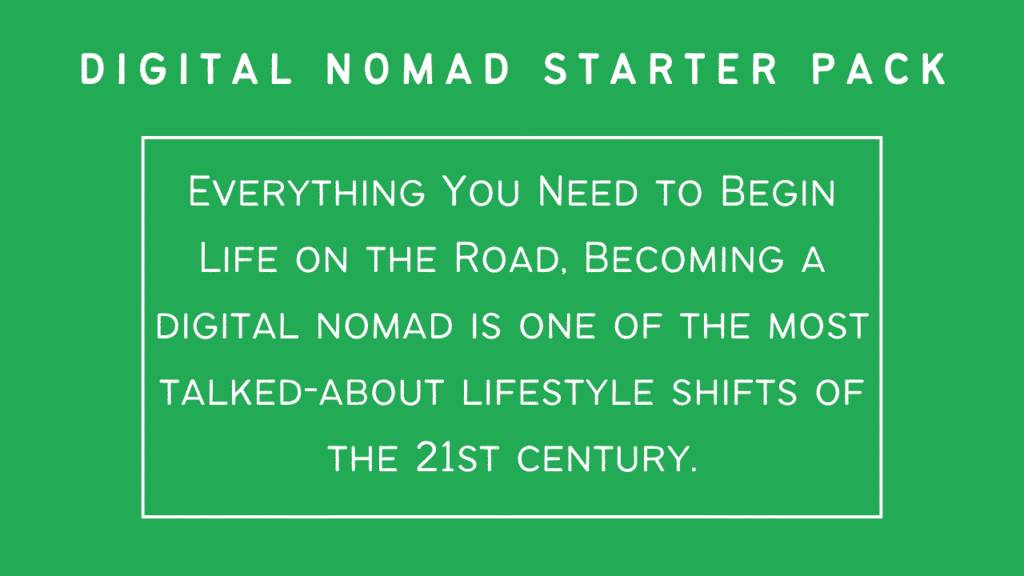Table of Contents

Digital Nomad Destination
For anyone dreaming of becoming a digital nomad, one of the biggest decisions is choosing where to begin. The first destination sets the tone for your entire journey. Pick the wrong place and you might struggle with costs, internet issues, or loneliness. Pick the right one and you’ll feel empowered, inspired, and ready to keep going. That’s why location isn’t just a matter of “where looks fun?” but about finding balance between lifestyle, affordability, infrastructure, and opportunity. Many nomads who quit early usually made one common mistake: they picked a destination that looked good on Instagram but wasn’t practical for their daily work and living needs. This guide is designed to help you avoid that mistake by showing you what really matters when choosing your first digital nomad hub.
Why Your First Stop Matters
Your first destination is where you’ll build confidence in this lifestyle. It’s where you’ll test your ability to balance work and travel, where you’ll figure out how to manage your routine, and where you’ll learn what’s essential and what’s not. If your first stop is too expensive, you might burn through savings before finding steady income. If it’s too isolated, you could struggle with loneliness. If the infrastructure is poor, your work may suffer. That’s why successful nomads often recommend starting somewhere “beginner-friendly”—a place with strong internet, a good expat community, affordable living costs, and flexible visa rules. Once you find your rhythm in such a place, you can then expand into more adventurous or offbeat destinations.
What to Consider Before Picking Your Destination
Affordability and Cost of Living
Money is the first thing to think about. A city where rent and daily expenses are low will give you breathing room to grow your income streams. Southeast Asia, Eastern Europe, and parts of Latin America are known for being budget-friendly while still offering good quality of life.
Infrastructure and Internet
Reliable Wi-Fi is the backbone of digital nomad life. Destinations with coworking spaces, cafés with fast internet, and good phone connectivity should be your top choice. Countries like Portugal, Thailand, Vietnam, and Mexico are popular because they combine lifestyle perks with strong internet coverage.
Visa and Stay Duration
Some countries allow tourists to stay only 30–90 days, while others offer digital nomad visas or long-term residency options. Portugal, Estonia, and Croatia have formal nomad visas, while Mexico allows 180-day tourist stays, which is great for first-timers.
Safety and Healthcare
A safe environment makes adjusting easier. Look for destinations where safety ratings are good and basic healthcare is reliable and affordable. Many nomads recommend travel insurance that covers healthcare abroad.
Community and Networking
Being around other remote workers helps you grow, learn, and feel less isolated. Cities like Lisbon, Medellín, and Bali thrive because they have large nomad communities, coworking hubs, and social meetups.
Top 10 Beginner-Friendly Digital Nomad Destinations
| Destination | Avg. Monthly Cost (USD) | Visa Options | Highlights | Safety Rating |
|---|---|---|---|---|
| Chiang Mai, Thailand | $800–$1,200 | 30-day tourist (extendable) | Street food, coworking, affordable housing | High |
| Bali, Indonesia | $1,000–$1,500 | 30–60 days tourist visa | Beaches, wellness, big nomad hub | Medium |
| Lisbon, Portugal | $1,800–$2,500 | Digital Nomad Visa, Schengen | Culture, Europe access, thriving nomad scene | High |
| Medellín, Colombia | $1,000–$1,600 | 90-day tourist | Spring weather, coworking, Spanish learning | Medium |
| Mexico City, Mexico | $1,200–$2,000 | 180-day tourist visa | Food, culture, close to US | Medium |
| Tbilisi, Georgia | $900–$1,400 | Digital Nomad Visa (1 year) | Hospitality, low taxes, growing hub | High |
| Prague, Czechia | $1,700–$2,400 | Schengen visa | History, coworking, central Europe base | High |
| Ho Chi Minh City, Vietnam | $900–$1,400 | Tourist visa | Bustling city, cheap food, solid internet | Medium |
| Budapest, Hungary | $1,500–$2,200 | Digital Nomad Visa | Vibrant culture, central Europe | High |
| Cape Town, South Africa | $1,200–$1,800 | Tourist visa | Beaches, mountains, lifestyle mix | Medium |
(Costs are estimates including rent, food, coworking, and transport for one person.)
How Long to Stay in Each Location
- Chiang Mai or Bali: 2–3 months is ideal to enjoy the culture and meet other nomads.
- Lisbon or Prague: 1–3 months works well since Europe can be more expensive.
- Medellín or Mexico City: 2–4 months since both offer long visas and cultural immersion.
- Tbilisi or Budapest: 2–6 months, especially if you want a central base in Europe.
- Cape Town: 1–2 months due to seasonal weather and distance from other hubs.
Adapting to Culture and Lifestyle
Every destination will challenge you with new languages, customs, and food habits. Take time to learn at least basic phrases of the local language—it builds respect and connections. Try local cuisines instead of sticking to Western food. Stay flexible with your work schedule, especially if time zones differ from your clients. For example, if you’re serving US clients while in Asia, you might have to work evenings and explore during the day.
Mistakes to Avoid in Your First Digital Nomad Destination
- Choosing only by Instagram photos without researching costs and internet.
- Not having travel insurance and facing health issues abroad.
- Isolating yourself by not joining coworking spaces or meetups.
- Moving too fast from one city to another without settling into a routine.
- Ignoring visa restrictions and overstaying.
Your First Destination Is a Launchpad
Choosing your first digital nomad destination is less about finding the “perfect” place and more about finding a launchpad—a place where you can learn how this lifestyle works for you. Start in a beginner-friendly hub where you’ll have the support of community, good infrastructure, and affordable living. Once you gain experience, you can expand to more adventurous places. Remember, digital nomadism isn’t about chasing every destination—it’s about building a sustainable balance between work, travel, and lifestyle.
